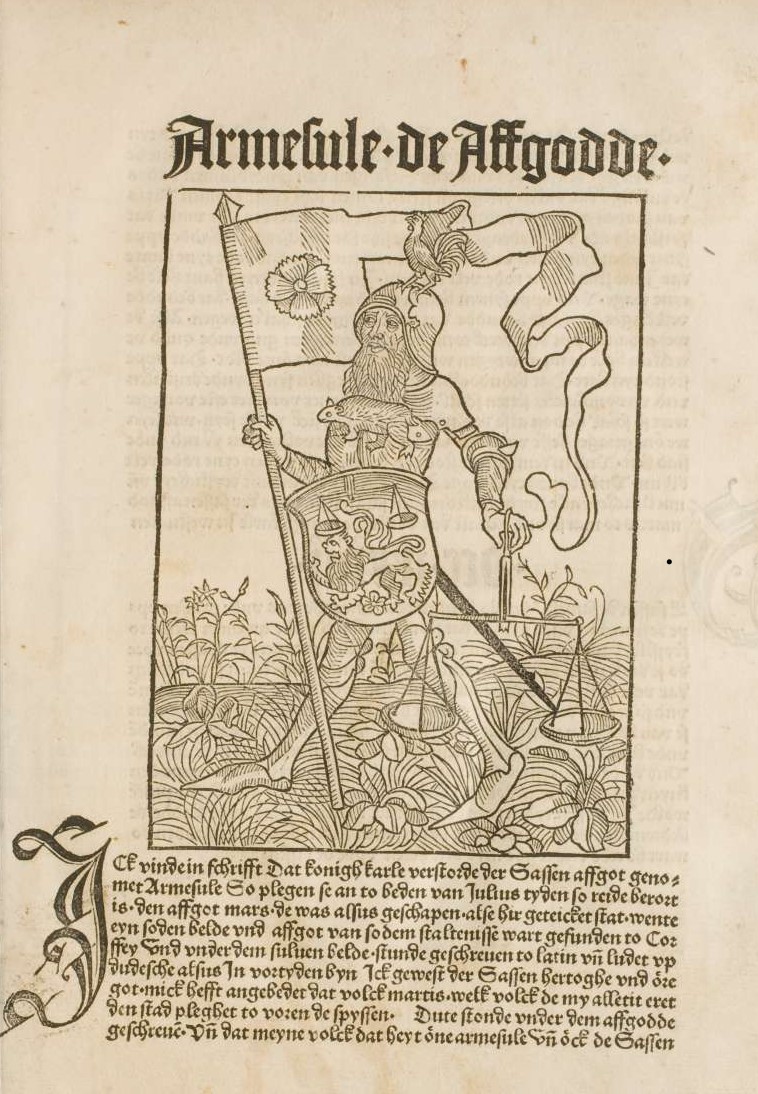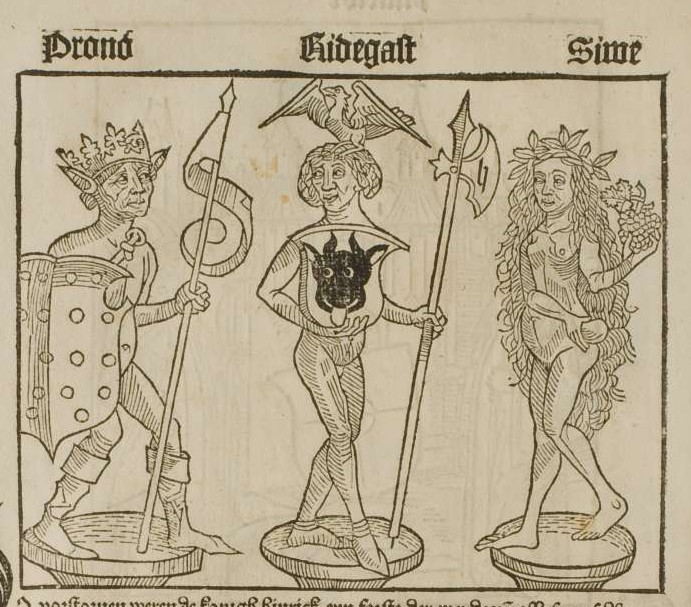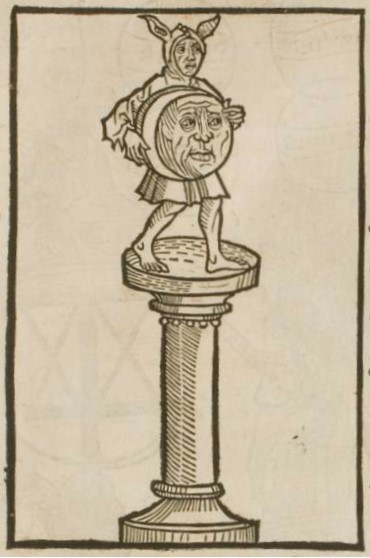|
|
| |
|
|
The Saxon Chronicle is the last large piece printed by
Peter Schöffer , an employee of Johannes Gutenberg .
Sometimes designated as
the "Lower Saxon Picture Chronicle" or Cronicon
Picturatum, it is extensively illustrated
with 1,255 woodcuts. Possible authors of this work are
both Conrad Bote and his relative Hermann Bote. The
author is not named.
Written in Middle Low German, the Saxon
Chronicle combines elements of a world chronicle with
the provincial, diocesan and urban historiography of
Saxon history up to the year 1489. Characteristic of
world chronicles it contains basic information on the
Biblical Creation story and the Fall of Man, but also
Saxon myths and tribal origins.
Covering the Mark Brandenburg and the cities of Bremen,
Halberstadt, Hildesheim, Lübeck and Magdeburg, there are
records of city, diocese and religious institutions,
genealogies of noble families, and episcopal catalogs.
Also recorded are the heroic deeds of princes, battles,
sieges, riots, epidemics and local traditions.
|
IMAGES OF HEATHEN IDOLS
The Full Collection of Images can be found at
Bayerische Staats Bibliothek
See Trogillus Arnkiel's Cimbrish
Heathen-Religion
for details concerning the origins of these
illustrations.
The Saxon God Irminsule

|
|
|
North German Gods |

Prono of Oldenburg / Ridegast of
Mecklenburg / Siwe of Polaber |
|
|
|

The God Flyns
This is the first known
reference to the god Flyns or Flynt, whom
Richard Verstegan in
Restitution of Decayed Intelligence in Antiquities
(1605), describes thus:
"The Idoll FLYNT, who had that
name for his being set upon a great Flint stone.
This idoll was made like the Image of death, and
naked, save onely a sheete about him. In his right
hand he held a torch, or as they termed it, a fire
blase. On his head a Lyon rested his two fore-feet,
standing with the one of his hinder feet upon his
left shoulder, and with the other in his hand; which
to support, he lifted up as high as his shoulder."
|
|
|

The Moon
The first known image of the Moon, which became the
basis of the diety representing Monday among the
so-called Seven Saxon Gods, illustrated in Richard
Verstegan's
Restitution of Decayed Intelligence in Antiquities
(1605). He described the Moon thus:
"The
forme of this Idoll seemeth very strange, and
ridiculous, for being made for a woman shee hath a
short coat like a man: but more strange it is to see
her hood with such two long eares. The holding of a
Moone before her breast may seeme to have beene to
expresse what she is, but the reason of her chapron
with long eares, as also of her short coat, and
pyked shooes, I doe not finde."
|
|
|

The God Crodo
The first and only source for the existence of a god
named Crodo. Introduced here, Crodo went on to
personify Saturday in
Richard Verstegan's
Restitution of Decayed Intelligence in Antiquities
(1605). Of him, Verstegan writes:
"The
last to make up here number of seven, was the Idoll
SEATER, fondly of some supposed to be Saturnus, for
he was otherwise called CRODO, this goodly god stood
to be adored in such manner as here this picture
doth shew him."
A deity named Crodo or Crodus is mentioned by
several writers: Albinus, in his Novce Saxonum
Historiue Progymnasmata, thus describes him :
"Crodus is an old man, in the
form of a reaper, standing with naked feet upon a
little fish, called a perch. He was clad in a white
tunic, with a linen girdle, in his left handa wheel,
in his right a small vessel filled with water in
which floated roses and every sort of garden-fruit.
The picture is in the Brunswick Chronicle."
|
Venus in her Wagon

|
|
|
|